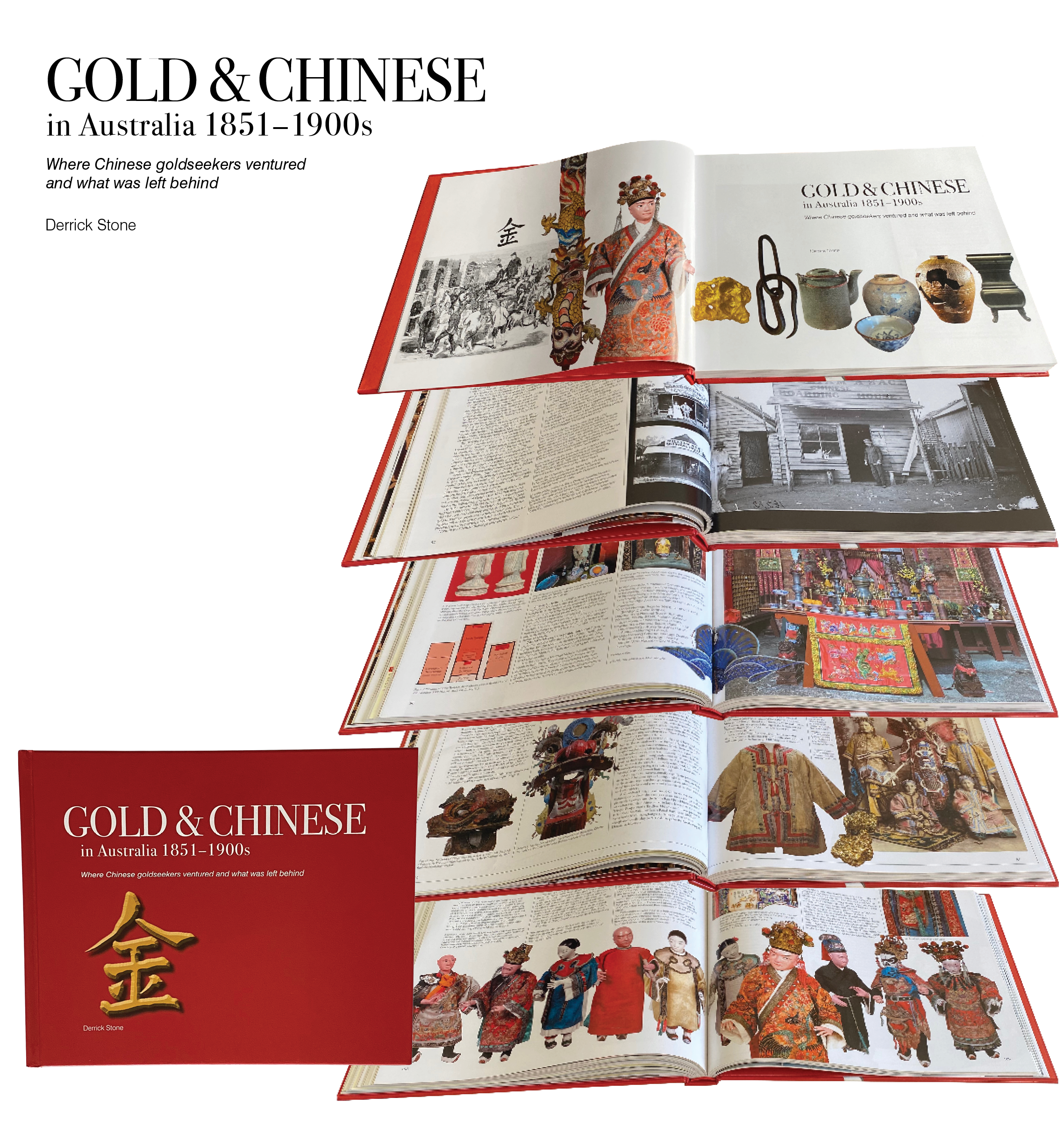
The book is in landscape format, 300 pages, 217mm x 270mm, illustrated throughout with over 960 images and printed in full colour on quality gloss art paper with hardback binding.
ISBN 978-1-7635 191-0-7
Recommended Retail
$145.00
Including 10% GST
Please include $15.00 for postage and handling within Australia
Published by Derrick I Stone Design
ABN 12 540 679 889
In a single volume Gold & Chinese identifies over 80 goldfields where Chinese goldseekers ventured and where they worked, worshipped, socialised and played.
Snap-shot histories include items of significant Chinese heritage held in Temples, museums and by private individuals. Mining relics include stacked-stone shafts and walls, tunnels, sluiced cliffs, water-races, dams, puddlers and equipment. Heritage items include Temples, Imperial Dragons, costumes, Chinese Opera figurines, scroll-plaques, wheelbarrows, artefacts and utilitarian utensils such as teapots and cups, chopsticks, brown glazed vessels and ginger jars. Historic photographs and contemporary paintings clearly show the architecture, topography and living conditions of the early days of Chinese goldmining.
There are descriptions of colonial Victoria’s first Chinese detective, Fook Shing; Australia’s only Chinese bushranger, Sam Poo; Tent Theatre; opium, tobacco and gambling; Chiang Hing Ung, the first lady on the Ovens goldfield; the Fok Sing and Co., brick kiln and The English and Chinese Advertiser. Other essays describe the long treks from Robe to Ballarat and Bendigo and from Pine Creek to Queensland.
... to search for gold was like trying to catch the moon at the bottom of the sea, so wrote Taam Sze-Pue, a Chinese goldseeker, who failed to strike it rich on the Palmer River goldfield in far North Queensland. He was one of the thousands of Chinese goldseekers to leave their homes in regions of the Pearl River Delta and sail to Australia, the ‘New Gold Mountain’, in search of fortunes.
Arriving as free immigrants or as indentured labourers under contract to Chinese merchants, the goldseekers walked to the goldfields carrying their worldly possessions on their back.
They crossed the Blue Mountains from Sydney to Ophir and Sofala, pushed their wheelbarrows along the rutted tracks northwards and westwards from Melbourne to Bendigo and Ballarat or treked across hostile country from Cooktown to the Palmer River. As new goldfields opened up the Chinese soon followed and ventured, over time, from Kiandra to Tingha in New South Wales, from Ararat to Omeo in Victoria, from Weldborough to the Pieman River in Tasmania, from Darwin to Pine Creek in the Northern Territory and from Gympie to Cooktown in Queensland. Gold & Chinese is part of their story.
Note: Card payments are accepted via the PayPal Checkout button and do not require a PayPal account 
